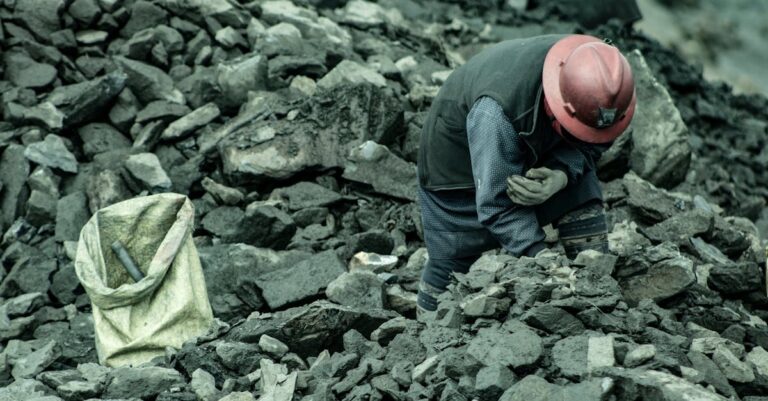
## The Grain Whisperers
The wind tasted of wet earth and coming rain. Elias wiped the grit from his calloused palm, squinting at the twin masts of Farmer Holm’s semaphore tower. Rain threatened; a sullen gray pressed down on the valley, mirroring his mood. He adjusted the worn leather of his glove, feeling for the familiar weight of the signal flags coiled around his wrist.
Holm’s tower blinked—three short, one long, two short. *Harvest slow.* A familiar complaint, but Elias read beyond the surface. The sequence carried a subtle urgency he’s learned to discern over years, a tremor beneath the practiced monotony of farm-to-farm communication. It wasn’t just about late wheat; it was a warning.
He responded, four long, one short—*Machine trouble.* A fabrication, of course. Their machines weren’t called ‘machines.’ They were the iron giants that stalked the fields, swallowing rows of barley with relentless efficiency. And they were stealing their livelihoods.
The village of Kaugurma lay nestled deep within the Latvian countryside, a scatter of weathered farmhouses clinging to the rolling hills. It was a place where time moved slow, measured by the changing seasons and the rhythmic creak of wooden plows. Until they arrived. The Automatons, as some bitterly called them. Gleaming metal behemoths imported from the West, promised increased yields and reduced labor. What they delivered was unemployment and despair.
Elias’s grandfather had been a master grain farmer, renowned for his ability to coax the richest harvests from the stubborn Baltic soil. He taught Elias everything – not just how to plant and reap, but how to *listen* to the land. To read the subtle shifts in weather before they happened, to anticipate disease before it struck. Now that knowledge felt like a curse, a useless relic in the face of cold steel and calculating gears.
The semaphore system wasn’t new. It had been established decades ago, originally for coordinating grain shipments and weather reports between farms. But Elias’s grandfather, along with a handful of others, had quietly repurposed it. They layered a second language onto the existing framework—a complex system of coded phrases, designed to evade any casual observer.
“They think we’re sending reports on wheat prices,” he muttered, tightening the knot of his scarf against the damp air. Lena, his wife, emerged from their cottage, her face etched with concern. Her hands were perpetually stained with the rich brown of freshly milled flour.
“You look like you’ll swallow stones,” she observed, handing him a steaming mug of strong, dark coffee.
He took the mug gratefully. “Holm’s worry is spreading,” he said, careful to keep his voice low.
“The Baron’s orders are becoming more insistent,” Lena responded, her tone clipped. “More Automatons arriving next week.”
The Baron von Kloss was a man of ruthless efficiency, obsessed with maximizing profits. He’s been acquiring land steadily for years, installing the Automatons on his estates and squeezing his tenant farmers dry.
“They’re taking everything,” he said, a knot forming in his stomach. He felt the familiar surge of anger—a potent mix of fear and defiance.
“We fight with what we have,” Lena said, her eyes shining with a fierce determination. “The land remembers.”
Their communication wasn’s purely tactical. It was layered with the echoes of shared experiences, familial bonds and unspoken emotions that thrived in the isolation. A sequence of two shorts, one long, was no longer just *water needed*. It also carried the memory of a shared afternoon spent repairing a broken fence, Lena’s laughter mingling with the clang of hammer and anvil. A series of four shorts signaled not just a rodent infestation, but also the memory of their first kiss under the harvest moon.
The system thrived because it was rooted in a deeply personal understanding of one another, developed over years of shared hardship and quiet companionship.
A week later, the rain returned—a relentless downpour that soaked the land and turned the tracks of the Automatons into muddy quagmires. Elias stood on his tower, watching as Farmer Janssens’s machine bogged down in a field of newly planted rye.
Three short, one long—*Stuck.* Janssens responded with two shorts, one long— *Gear failure*.
Then came a sequence Elias hadn’s seen before. Six shorts, followed by three longs—a baffling combination of signals never documented in their shared lexicon. He frowned, racking his brain.
“What is it?” Lena asked, emerging from the cottage, her face pale with worry.
“I don’t know,” he admitted, his hand trembling as he scribbled the sequence in his notebook. “It doesn’s make sense.”
As they poured over the symbols, a young boy, little Jānis, ran up to Elias’ tower. He was breathless and frantic, his eyes wide with fear.
“The Baron!” he cried. “He’s got men watching the towers! They saw Janssens’s signal!”
Elias felt a chill run down his spine. Someone had discovered their system. But how? And who betrayed them?
Suddenly, he noticed something peculiar about the new sequence. It was subtly different from all their established codes—a slight variation in timing, a barely perceptible shift in the angle of the flags. He realized that it wasn’t an attack. It was a response.
He recalled Lena’s words: “The land remembers.” The land *also* communicated, in a language the Baron didn’t understand. A natural rhythm of weather patterns and soil conditions that could be interpreted as a code, relayed by the farmers through deliberate adjustments to their semaphore system.
The Baron was observing their coded messages, attempting to decipher them—but he was misinterpreting a natural phenomenon.
Lena gasped, realizing the connection. She ran to her herb garden and plucked a sprig of wild rosemary, rubbing its scent between her fingers. “He’s reading the wind,” she whispered, “not the message.”
The Baron had been so focused on dismantling their system that he missed its origins. He was trapped in a digital interpretation of analog communication, focusing on the *how*, not the *why*.
Elias quickly responded to Janssens—two long, one short – *Weather shift.* The farmers understood. They began subtly altering their flag movements to reflect the actual weather patterns – a deliberate act of mimicry, designed to confound the Baron’s surveillance.
The system wasn’t defeated; it evolved. It incorporated this new layer of natural mimicry, blending seamlessly with the landscape. The farmers continued to communicate – not just about machines and harvests, but about their lives, their loves, and their fears.
Years passed. The Automatons continued to toil in the fields, but their impact was diminished by a subtle resistance – a refusal to surrender entirely to efficiency. The semaphore towers remained, silent sentinels against the horizon – a testament to human ingenuity and resilience.
A young scholar, decades later, studying ancient communication systems, found a peculiar pattern in the Baltic semaphore records. A subtle variation in flag movements that defied logical explanation. He dismissed it as a local anomaly, a quirk of regional practice.
He failed to see that he was observing the echoes of a forgotten language, whispered across generations—a testament to a community’s unwavering connection with the land and each other. And it all began with misinterpreted love embedded in a way to relay coded signals.
The wind carried the scent of rosemary and rain, reminding those who remembered what a language can be.


